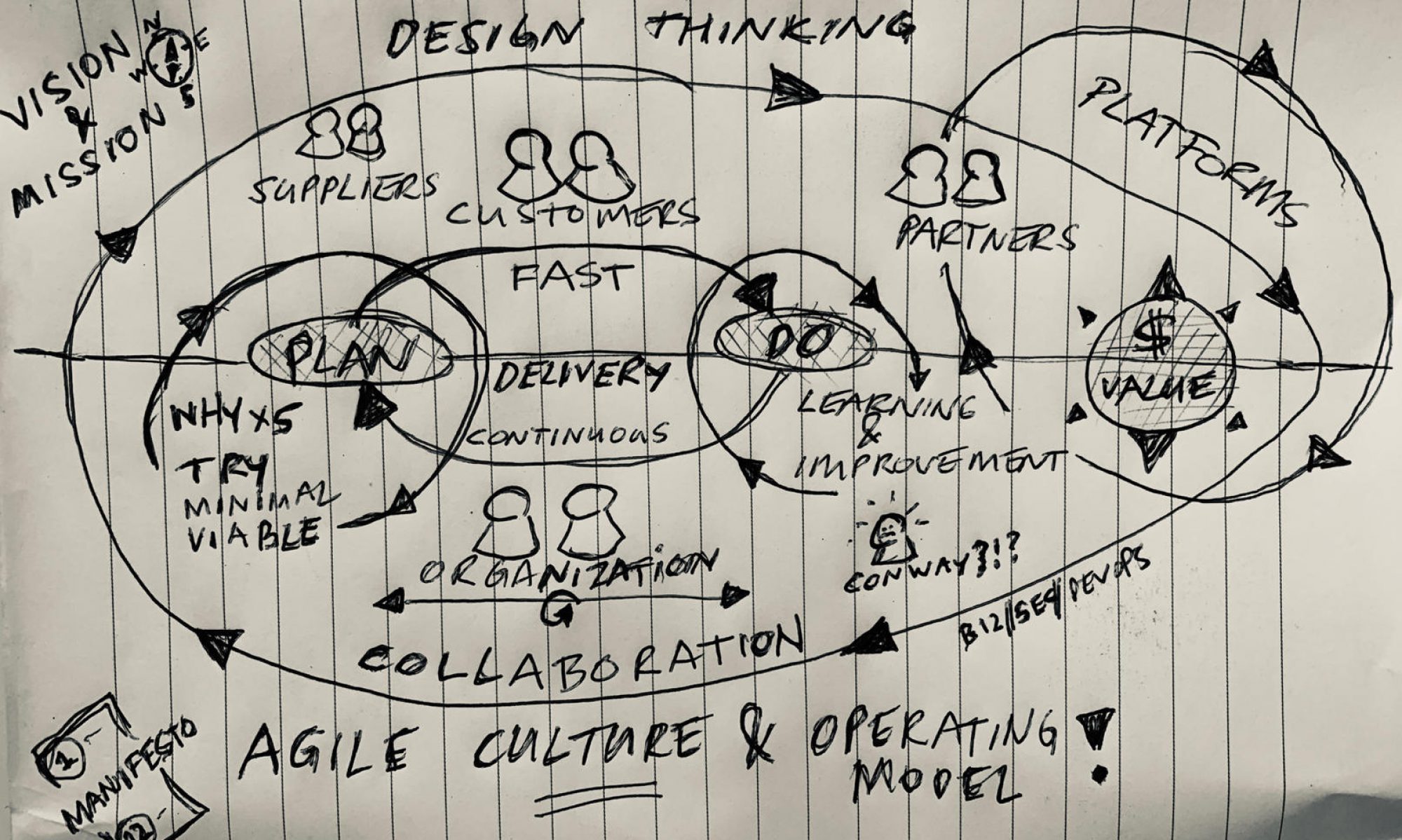Platform thinking is best described as a technology driven business strategy.
In construction, a platform is something that lifts you up and on which others can stand.
The same is true in business: By building digital platforms, other businesses can easily connect their business with yours, creating an ecosystem, build products and services on top of it, and co-create value. This ability to “plug-and-play” is a defining characteristic of Platform Thinking.
From a technology perspective, successful platforms:
- Remove friction from delivery teams by focusing on high quality, self-service access to foundational technology.
- Create an ecosystem of technology and business capabilities. Using domain-driven principles, carefully-factored business capability interfaces (APIs) are critical components of an effective, modern Service Oriented Architecture (SOA) strategy.
- Enable explicit investment in a foundation for experimentation which ensures every delivery team has access to tools to make testing new ideas and validating learnings easy.
- Engage your business and technology stakeholders to prioritize building the most valuable capabilities in a lean, incremental manner.
- Leverage third party IT platforms and services
From a business perspective, the success of a platform strategy is determined by three factors:
- Connection: how easily others can plug into the platform to share and transact
- Gravity: how well the platform attracts participants, both producers and consumers
- Flow: how well the platform fosters the exchange and co-creation of value
Examples of business models rooted in platform thinking are Uber, Amazon, AirBnB, eBay, Bol.com and Social Media.

